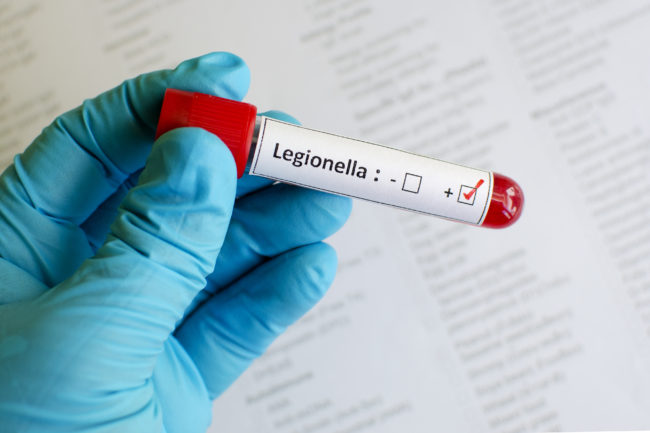It has been three years since Legionnaires’ disease made national headlines following an outbreak surrounding the cooling tower of the Opera House Hotel in the South Bronx. Legionnaires’ disease is a serious type of pneumonia caused by the waterborne pathogen known as Legionella. It is contracted when susceptible individuals inhale water droplets or mist containing elevated levels of legionella bacteria. New York City has as many as 1,200 towers with evaporative heat exchangers, usually installed on the top of a building as part of its air conditioning system and through which water and air are brought into direct contact with each other to reduce the temperature of the water. Cooling towers, like many water systems, contain non-detectable levels of legionella, which can rapidly amplify to dangerous levels under certain conditions if not properly treated. When legionella levels rise, the air and water heat exchange within a cooling tower generates mist, which aerosolizes the bacteria, allowing it to travel (in some cases for blocks) and become capable of human inhalation, potentially causing disease.
In partial response to the Opera House outbreak, in 2015, New York City and New York State put in place sweeping measures governing the registration and treatment of cooling towers in an effort to mitigate the risk of future outbreaks of Legionnaires’ disease. Specifically, New York City enacted Local Law 77 to regulate, among other things, registration, testing, treatment, and inspection of all New York City cooling towers for waterborne pathogens such as legionella. Built into the legislation are requirements that building owners and operators develop a comprehensive plan for cooling towers that is in accordance with ANSI/ASHRAE Standard 188-2015.
According to a 2018 news report, however, city inspections of cooling towers in 2017 revealed nearly 1,000 towers were in violation of the new law. Reportedly, more than 65 percent of those violations were declared critical and 20 percent were considered a public health hazard.
New analysis from New York City Councilman Ben Kallos’ office suggests that the situation has gotten worse since the 2018 news report. According to the latest data, 44 percent of premises owners leasing properties with cooling towers have not had them inspected since 2017. As a result, Kallos and others sponsored legislation (Int. No. 1149-B, 1158 & 1166-A) to amend Section 28-317.5 of the Administrative Code of the City of New York. The amendment required the New York Department of Health and Mental Hygiene (DOHMH) to send owners and operators of cooling towers an electronic reminder 30 days prior to the filing deadline for annual certifications with a link to where these certifications can be submitted. This amendment also required cooling tower inspectors to report to DOHMH in real time (within five days) when certain inspections occur. Further, this bill would require building owners to make cooling tower inspection results available for public examination. An additional amendment requires the DHMH to conduct year-long assessments of all potential determinants of Legionnaires’ disease in NYC.
The full NYC Council voted to approve the amendments on March 28, 2019, which will become effective 180 days later. Supporters of this new law claim that it makes it easier for health inspectors to identify problem buildings.
For non-proactive building owners and operators, the consequences of failed inspections of cooling towers can be severe. For example, even if legionella is not detected during an inspection, a violation of the inspection law can result in significant fines totaling thousands of dollars. Those fines are typically resolved at a hearing before the Office of Administrative Trials and Hearings.
More noteworthy, the legal risks increase exponentially if there is an outbreak linked to a cooling tower that has failed such an inspection. The prevalence of personal injury litigation arising out of diagnosed cases of Legionnaires’ disease is increasing. The number of cases reported to CDC has been on the rise since 2000, with health departments reporting almost 7,500 cases of Legionnaires’ disease in the United States in 2017. The number of cases for 2018, once finalized, is expected to exceed 8,300.
For additional discussion of the New York and other regulations governing cooling towers and Legionella mitigation and the legal jeopardy associated with outbreaks of Legionellosis, contact Goldberg Segalla’s National Legionnaires’ Disease Coordinating Counsel at 443-615-7502.

